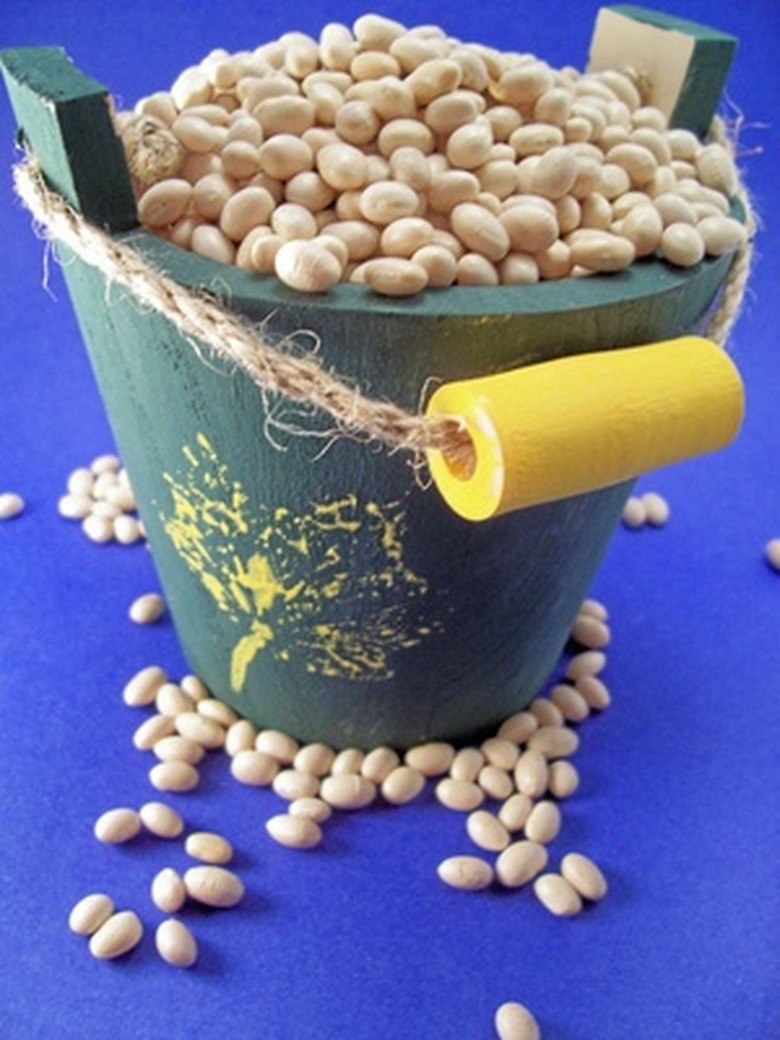The Anatomy Of A Bean Seed
Beans are actually a common name for the seeds from plants of the Fabaceae family. These seeds are very popular as a food and as feed for livestock. Beans are full of protein and are easily grown in many conditions. The structure of a bean seed is common among many varieties.
The Seed Coat
The seed coat (testa) is the outer layer of the seed that protects it from damage from insects and disease. On the seed coat is also the micropyle, a small, porous area of the seed coat that allows water into the seed for germination during the growing period. The hilum, another part of the seed coat, is a small scar where the seed was previously attached to the plant stalk.
- Beans are actually a common name for the seeds from plants of the Fabaceae family.
- The seed coat (testa) is the outer layer of the seed that protects it from damage from insects and disease.
Embryo
The embryo of the seed is inside of the seed coat. The embryo is the developing plant on the inside of the seed. Once water enters the plant, the embryo begins to germinate and sprout from the shell of the plant.
Cotyledon
Until the seed gets sustenance from nutrients in the soil, and from water, it must receive nourishment from elsewhere. The cotyledon is the fatty portion of the seed that holds nutrients for the seed to survive on until it has germinated and has begun to sprout into the surrounding soil.
The Radicle
The radicle is the portion of the seed that emerges from the seed during germination. This is the first portion of the seed to emerge from the testa.
- The embryo of the seed is inside of the seed coat.
- The cotyledon is the fatty portion of the seed that holds nutrients for the seed to survive on until it has germinated and has begun to sprout into the surrounding soil.
The plumule
The plumule is a leaf-like growth that appears during the seed's development into the plant. The space between the radicle and the plumule is called the hypocotyl, which develops into the stem of the plant as it grows.
Bean Seed Begin To Germinate?
Beans take just seven to 14 days to germinate in soil at 60 to 85 degrees Fahrenheit soil. In cold soil below 60 F, germination rates go down as some or all of the seeds will rot before they sprout. Once sprouted, bean seedlings are sensitive to air temperatures below freezing. Select a granule 5-10-10 fertilizer, and mix it into the top 6 inches of the soil. Plant bean seeds directly into the garden bed so you won't have to transplant later. Pick a spot in full sun with loose, well draining soil. A bean plant has a symbiotic relationship with naturally occurring bacteria in the soil. Only treat the seeds right before you plant.
- The plumule is a leaf-like growth that appears during the seed's development into the plant.
- In cold soil below 60 F, germination rates go down as some or all of the seeds will rot before they sprout.
References
- Botanical online: Seed Plants
- Growing Your Future: The Anatomy of a Bean Seed
- University Freiburg: Seed Structure and Anatomy
- The Arizona Cooperative Extension: Soil Temperature Conditions for Vegetable Seed Germination
- University of CA at Davis Dept of Vegetable Crops: Soil Temperature Conditions for Vegetable Seed Germination
- Organic Gardening: Beans: Growing Guide
- Cornell University: Bush Beans
- Bountiful Gardens: Bacterial Inoculants
- Purdue University Department of Horticulture: Growing Beans in the Home Vegetable Garden
